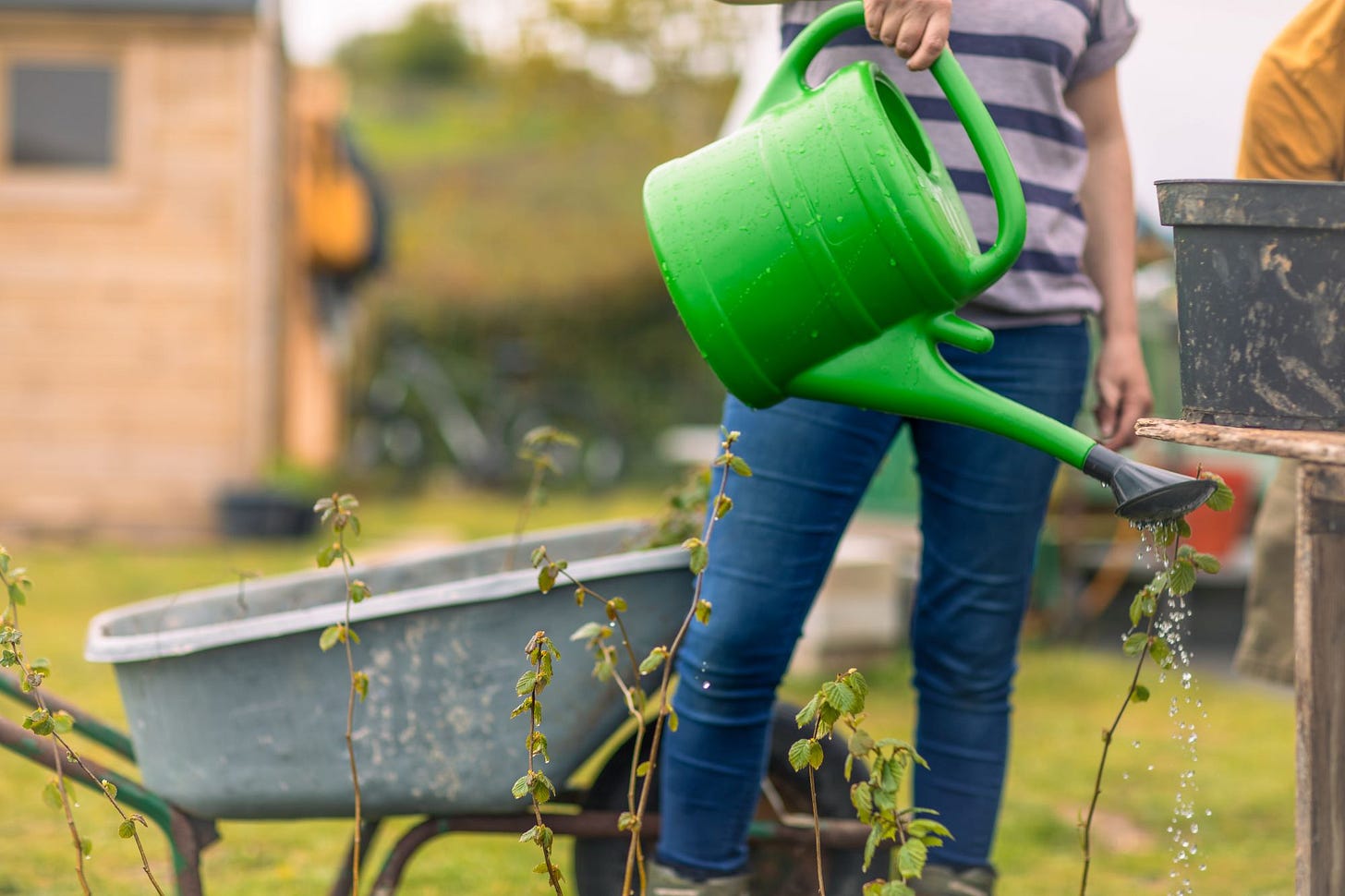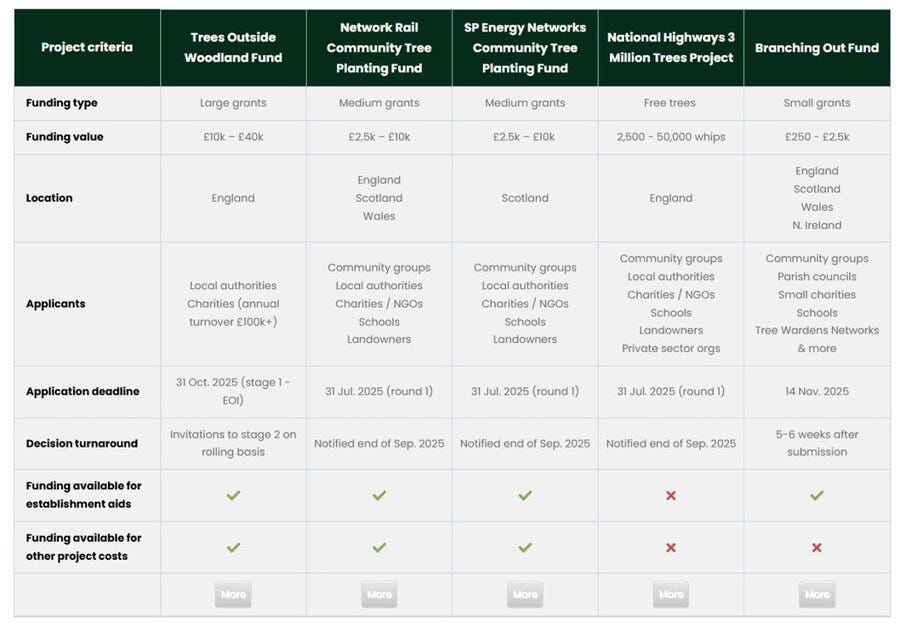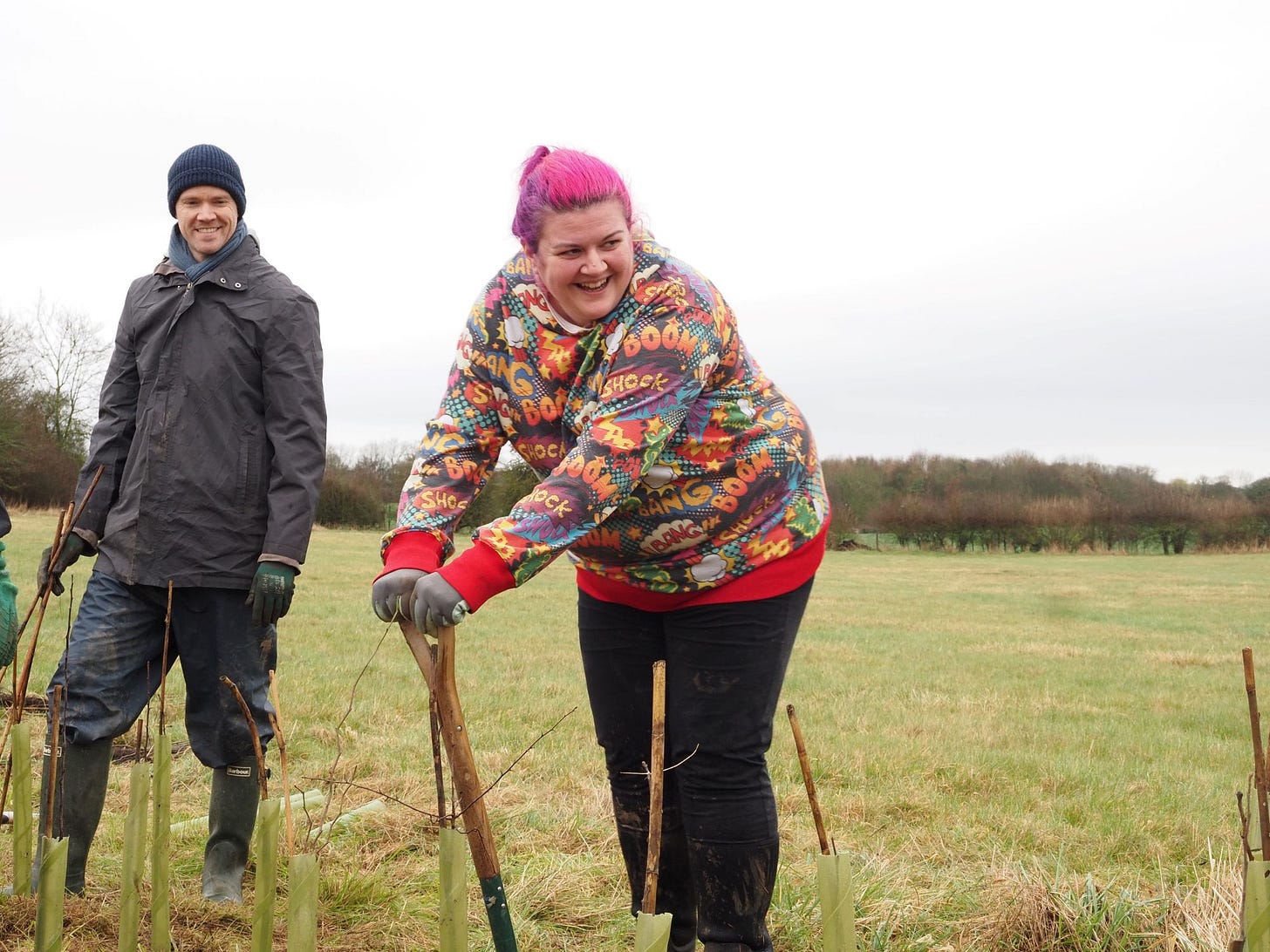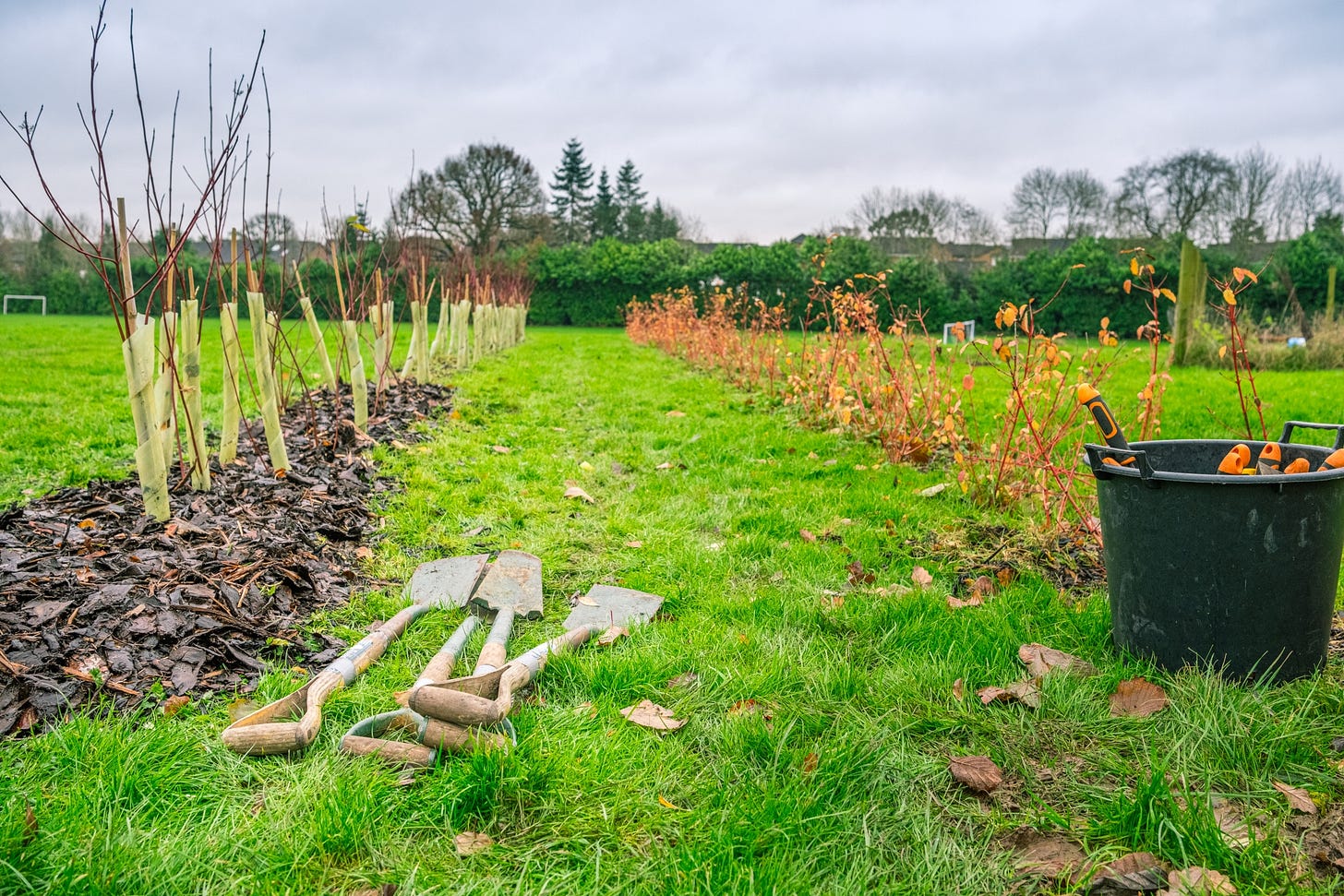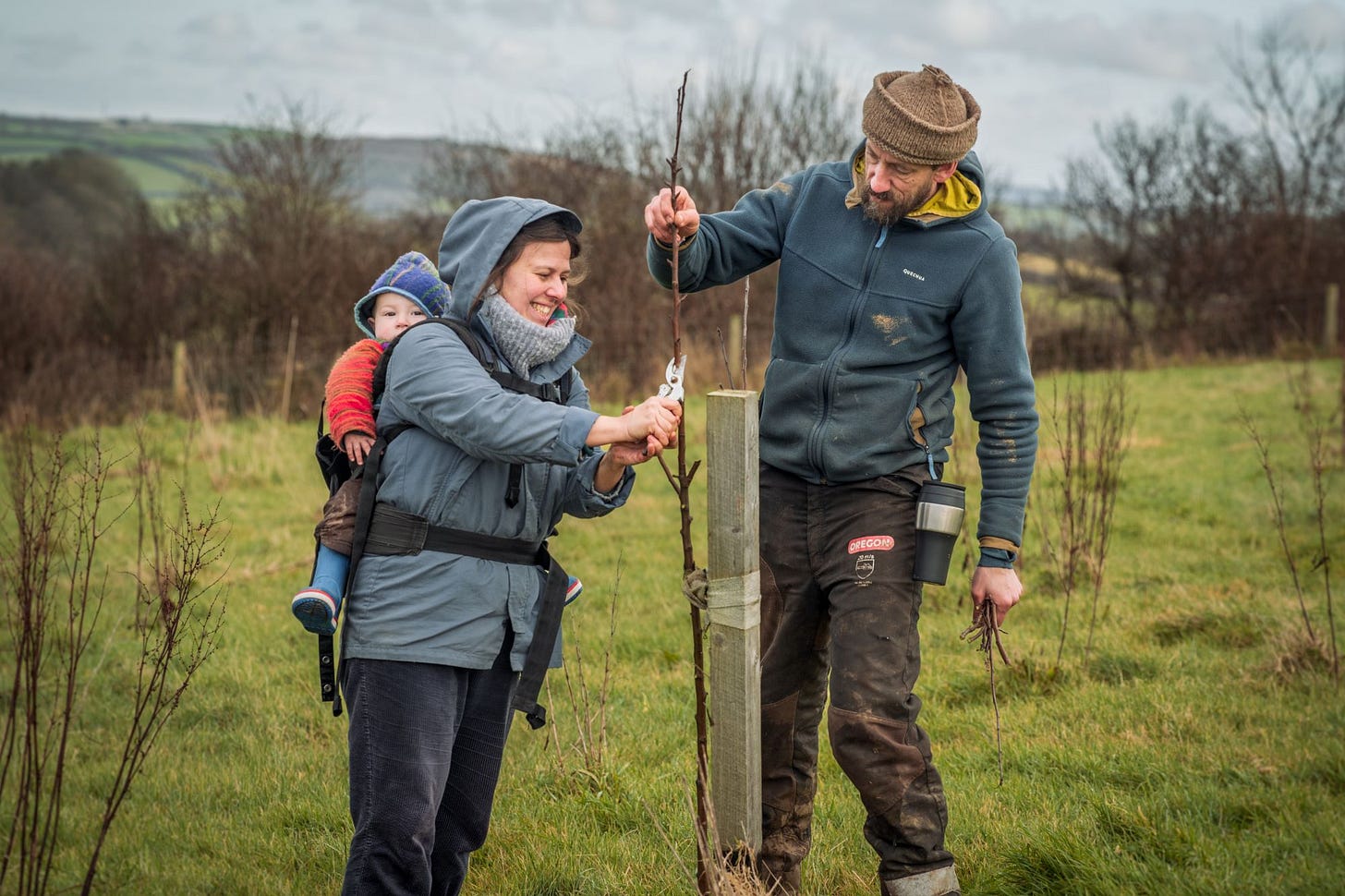The Tree Council’s suite of tree planting grant opportunities opened to applications for the 2025/26 season last week. To help support applicants, the Community Planting Programmes Team hosted a one-hour online talk on Monday afternoon to introduce the various funding opportunities available.
We were pleased with the response, with almost 250 attendees signing up to learn about the different grant streams on offer.
The talk was hosted by Sara Lom (CEO), Jon Stokes (Director of Trees, Science and Research), Sam Turner (Community Planting Programmes Operation Lead), Adam Curtis (Senior Officer), with support from the wider team, including Geraldine Creaven (Branching Out Grants Officer) and myself, Tess Taylor (Projects Co-ordinator).
During the session, we provided an overview of the five different grants and ensured there was plenty of time to answer questions from attendees.
You can watch the full talk here:
What funding is available?
In addition to Branching Out (BO), our small grant fund, which has now been running for an incredible 20 years, this year sees the exciting launch of a new £1million Trees Outside Woodland Fund, in partnership with Defra. These grants join SP Energy Networks Community Tree Planting Grant (SPEN), Network Rail Community Tree Planting Grants (NR), and National Highways 3 Million Trees Project (NH). A huge thank you to our partners for supporting these grants – and giving communities across the UK the opportunity to make a real difference.
Our grant pots range between £250 to £40,000 and are open to a range of organisations, from community groups and charities, to schools and local authorities. They are all designed to support the establishment of trees outside woodlands, which includes street trees, hedgerows and orchards.
Funding is available for projects across the UK – from Land’s End to John O’Groats, and including Northern Ireland. So there really is opportunity for everyone to get involved!
Each fund has its own criteria, eligibility requirements and aims. We really recommend taking a look at what is on offer to see which fund is most suitable for your organisation and project.
To help, we’ve created a handy summary table where you can see the key features of each fund at a glance.
What are we looking for?
There’s no one-size-fits all answer, as each fund has slightly different criteria, but there are several key criteria that are common for all the funds, and we’d like to see these come across in your application.
Clear community benefits
We love to see projects that actively involve the local community in the planning and delivery, including site selection, planting, or aftercare of the trees. Community involvement not only gets people outside and hands on, learning about the trees they are planting and why, but also helps to create a sense of ownership. Trees planted with community support often thrive, thanks to the many local tree champions looking out for them.
We do understand that some projects may not be suitable for community engagement. However, we’d still like to hear how your project benefits local people, for example, by improving air quality or enhancing the landscape.
Please note that for some of our grant schemes, such as BO, SPEN, NR and NH, community involvement is a key requirement. In these cases, we need to clearly understand how the community is being involved.
For Branching Out, we particularly like to support projects that involve school children.
Clear biodiversity benefits
It is important to us that the project delivers clear biodiversity benefits. In the first instance, this means ensuring that the planned tree planting does not threaten or degrade pre-existing special habitats or protected species. We favour planting projects that take biodiversity into account – whether through the choice of species (eg trees that offer blossom, berries and habitat value), the type of planting (e.g. a hedgerow with an orchard that increase ecological diversity), a focus on habitat restoration or connectivity and/or alignment with wider environmental initiative or strategies. We’re excited to review lots of project applications that support and enhance local biodiversity!
Follow the ‘right tree, right place’ principle
At The Tree Council, we are committed to the ‘right tree, right place’ principle. As part of your application, we would like to see details of the tree species and type you have chosen, and the reasons for your selection. We recognise that every site is different, and in some cases, such as urban street planting, non-native tree species may be the best choice. That said, in general our preference is for native tree species, UK sourced and grown, sourced from nurseries with strong bio-security standards. Note that for the Trees Outside Woodland Fund, all trees must be sourced from suppliers able to provide evidence that they follow the Plant Health Management Standard.
More information related to the types of trees we fund can be found in the relevant fund Application Guidance.
Demonstrate suitable establishment and aftercare plans
Newly planted trees are especially vulnerable and need proper care to ensure they survive and thrive. An establishment and aftercare plan is an important element of your project planning, especially due to the hotter and drier conditions we are experiencing. We want to understand how you plan to establish and look after your trees for at least the first three years, and who will lead on this care. If you would like advice on the best way to care for your trees, there is plenty of guidance on our Guidance Hub.
Willing to share monitoring and evaluation data
Knowing where your trees have been planted and, where appropriate, the survival rates, is essential for the monitoring the success of the programme and for reporting back to our funders. The level of detail we require will depend on the specific fund and the amount awarded. Our Monitoring and Evaluation Team will be in touch with the successful applicants to go through the reporting requirements in more detail.
I hope the above gives you a little more information on what we’re looking for in your projects.
We’re here to help
If you have any questions or would like to discuss your project plans to see if they’re a good fit for one of our grants, please don’t hesitate to get in touch.
You can contact us via the grants inbox – grants@treecouncil.org.uk - and a member of the team will get back to you.
Best of luck with your application—we look forward to reviewing your project and hopefully working together to establish thousands more trees outside woodlands, throughout the UK.
Tess Taylor is Projects Coordinator at The Tree Council
Find out more about The Tree Council at treecouncil.org.uk. Sign up to our monthly newsletter The Leaflet, and follow our social accounts: Instagram, TikTok, Facebook, LinkedIN, X/Twitter, YouTube.



